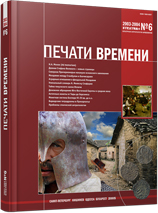Резервы роста вотчинной эксплуатации и феодальный иммунитет в Молдавии
Potential for Growth of Feudal Exploitation and Feudal Immunity in Moldavia
Author(s): Pavel V. SovetovSubject(s): History, Social history, Modern Age, 16th Century, 17th Century, 18th Century
Published by: Издательский дом Stratum, Университет «Высшая антропологическая школа»
Summary/Abstract: Based on a wide range of records, land deeds, first of all, the author demonstrates that the late 16th c. in Moldavia witnessed a growing trend to limit feudal, and especially, fiscal immunity. It is connected with unprecedented growth of centralized feudal exploitation, which took place by means of cutting state privileges of the landlords. While this situation was not new for secular landlords, limitation of clerical feudal lords’ immunity rights was extended in time, so the two groups had equaled on this issue only by early 18th.Since one could not evade state duties, landlords strived to obtain a minimum of immunity rights. In particular, they were demanding tax exemption of those dependent peasants who were most required in their household. Villains (holopi) were one of the categories that was exempted of any duties and penalties by the Code of 1628. This legal norm was maintained by rulers till late 17th c. and, at the same time, it was frequently infringed by officials who were trying to impose taxes on all holopi.Last quarter of 16th c. witnessed a strong growth in number of issued immunity deeds, which was caused by existence of vast areas of unexplored lands. However, many secular lords were unable to ensure solvency of their households even by attracting new comers. At the same time, 17th c. marked a reduction in number of clerical lands where peasants were covered by tax immunity. Monasteries managed to preserve some privileges only for those villagers who were bound by a specialized corvee.It was the time when clerical lords were fixed some tax quotas for collections in kind in favor of the state, but most limitations concerned financial duties. The second third of the century witnesses almost complete disappearance of tax immunity, and in the late 17th – early 18th c. peasants of clerical feuds were paying state taxes like peasants of private lands. Thus tax and immunity rights of most Moldavian feudal lords were cancelled.
Journal: Stratum plus. Археология и культурная антропология
- Issue Year: 2004
- Issue No: 6
- Page Range: 190-226
- Page Count: 37
- Language: Russian
- Content File-PDF

